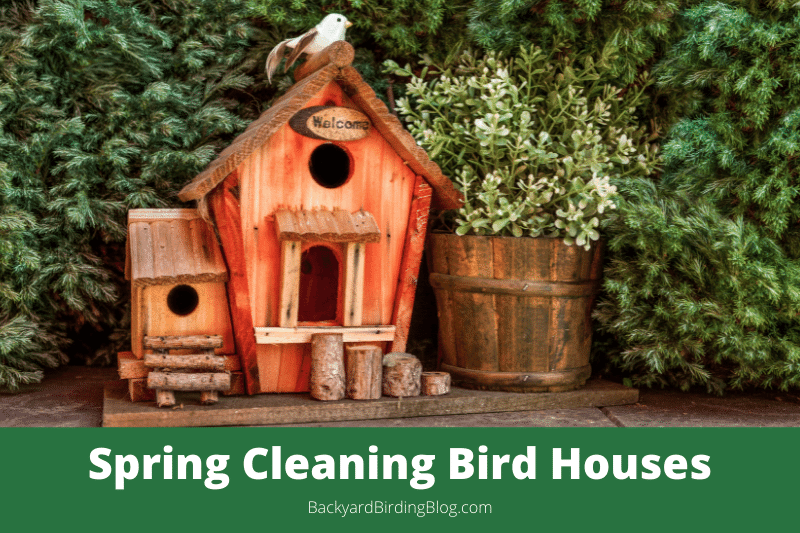Spring cleaning bird houses
Springtime is a busy time for backyard birders. It’s a time when the migratory birds start to return and winder feeders are taken down. It’s also the start of the nesting season so it’s a great time for spring cleaning bird houses if you haven’t already done so – bird houses should be cleaned at least once a year.
Although some birds are happy to return to a previously used nest or will just build a new nest on top of an old one, it’s still a good idea to clean out your bird house so they have a nice clean environment to build a new nest.
The reason for this is that old nesting material can contain insects and diseases that can be harmful to the baby birds. In addition, if a new nest is built on top of an old one this means the new nest is closer to the entry hole making it less safe for the nestlings – not only can they more easily fall out of the bird house before they are able to fly, but it is also easier for predators to get to them, especially other birds.
The tools you’ll need
There are a few items of equipment you’ll need when cleaning your bird houses. Firstly, you should always wear gloves to protect your hands, both from damage from twigs and such like and also from parasites and disease.
It’s also a good idea to wear a face mask to prevent you from inhaling dust from the nesting material.
In addition you’ll need tools to take down and open the bird house, and you’ll also need cleaning materials. These include a plastic trash bag to hold the waste material, a stiff brush for cleaning inside the bird house and a cleaning solution with rags. For this you can use a solution of nine parts water to one part bleach.
How to clean bird houses

Before you actually start to take the bird house down, first check inside to make sure it’s empty and there are no birds in there.
However, try not to just peer in through the entry hole in case a startled bird comes rushing out.
Instead, stand away from the entry and tap the side of the bird house and listen for movement.
Once you are sure the bird house is empty you can start to take it down.
These days most bird houses are designed to open easily, having a side that slides open or a roof with hinges. Make sure you have your gloves on, then open the bird house and slide out all the materials inside it into the trash bag. Then tie up the bag and discard it in the trash.
Use the stiff brush to clear away any remaining debris that may still be clinging to the insides of the house, and any remaining bird droppings, then wash the inside of the house with the rags and cleaning solution. Make sure you also clean the entrance hole and also the perch if your bird house has one.
After washing with the cleaning solution, rinse it with clean water and then leave it to dry in the sun (if you’re lucky enough to have some sun where you live!)
Inspect/repair the bird house
Once it’s dry, do a quick inspection to make sure all parts are in full working order. In particular, make sure it’s still waterproof once the lid is back on and ensure all openings are clear and not blocked. Finally, sand down or otherwise remove any sharp edges or splintered wood to protect the birds, especially on the inside where the nestlings will be.
Put it back
Finally, put the bird house back together and put it back up. Make sure it’s in a good location – high enough for the birds to be safe from predators and also close enough to bushes or small trees so that the young birds can land there when first learning to fly. See our article on protecting bird houses from predators for more information about this.
Conclusion
Remember that you’re not restricted to only cleaning bird houses once a year. You can clean them again before the nesting season begins or in the fall once all the nestlings have left. Don’t, however, clean them mid-season when they’re likely to be in use.
Giving your bird house a thorough spring cleaning is a great way to welcome the birds back and helps to ensure the baby birds have a secure and healthy start to their lives.

